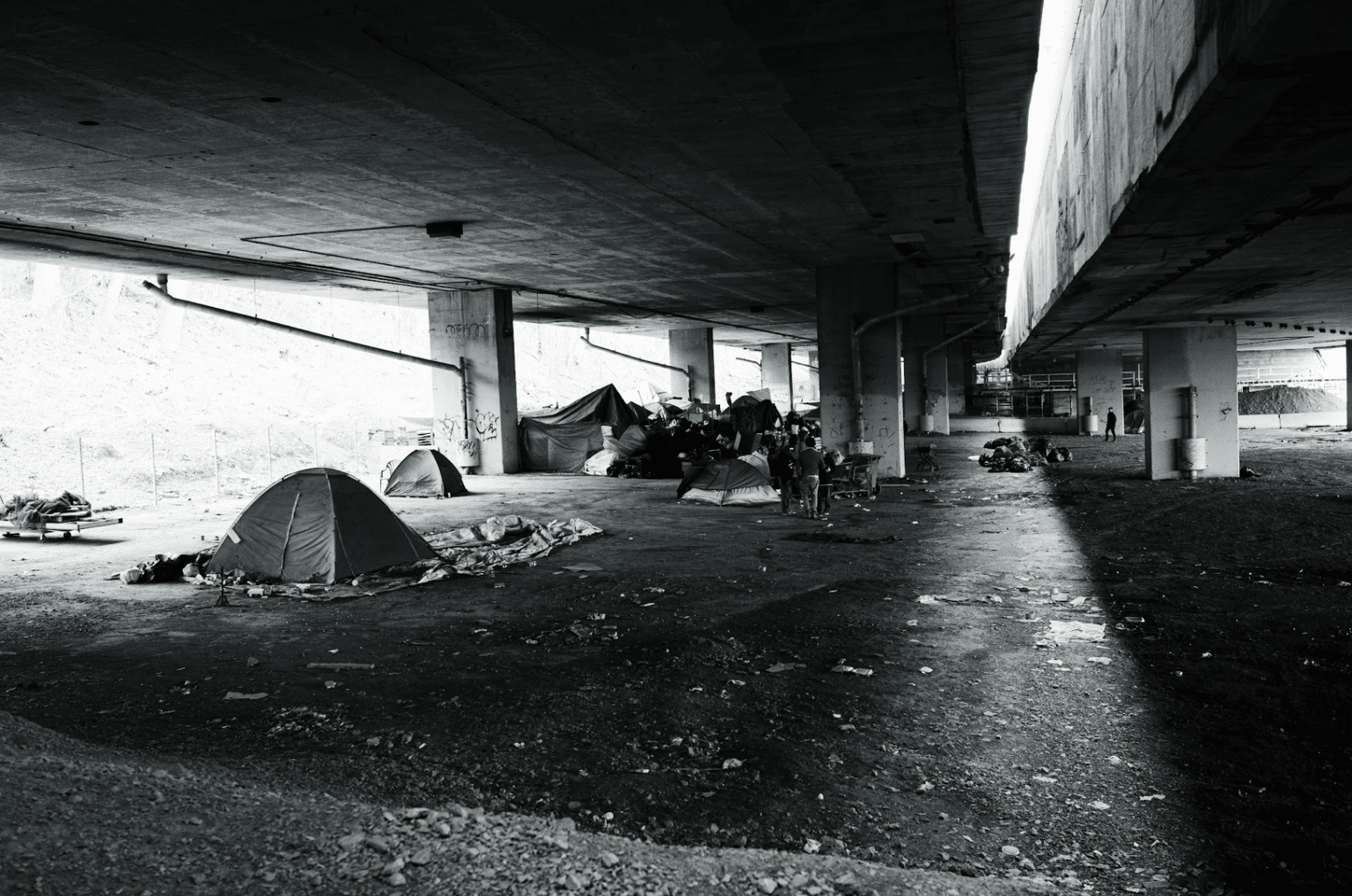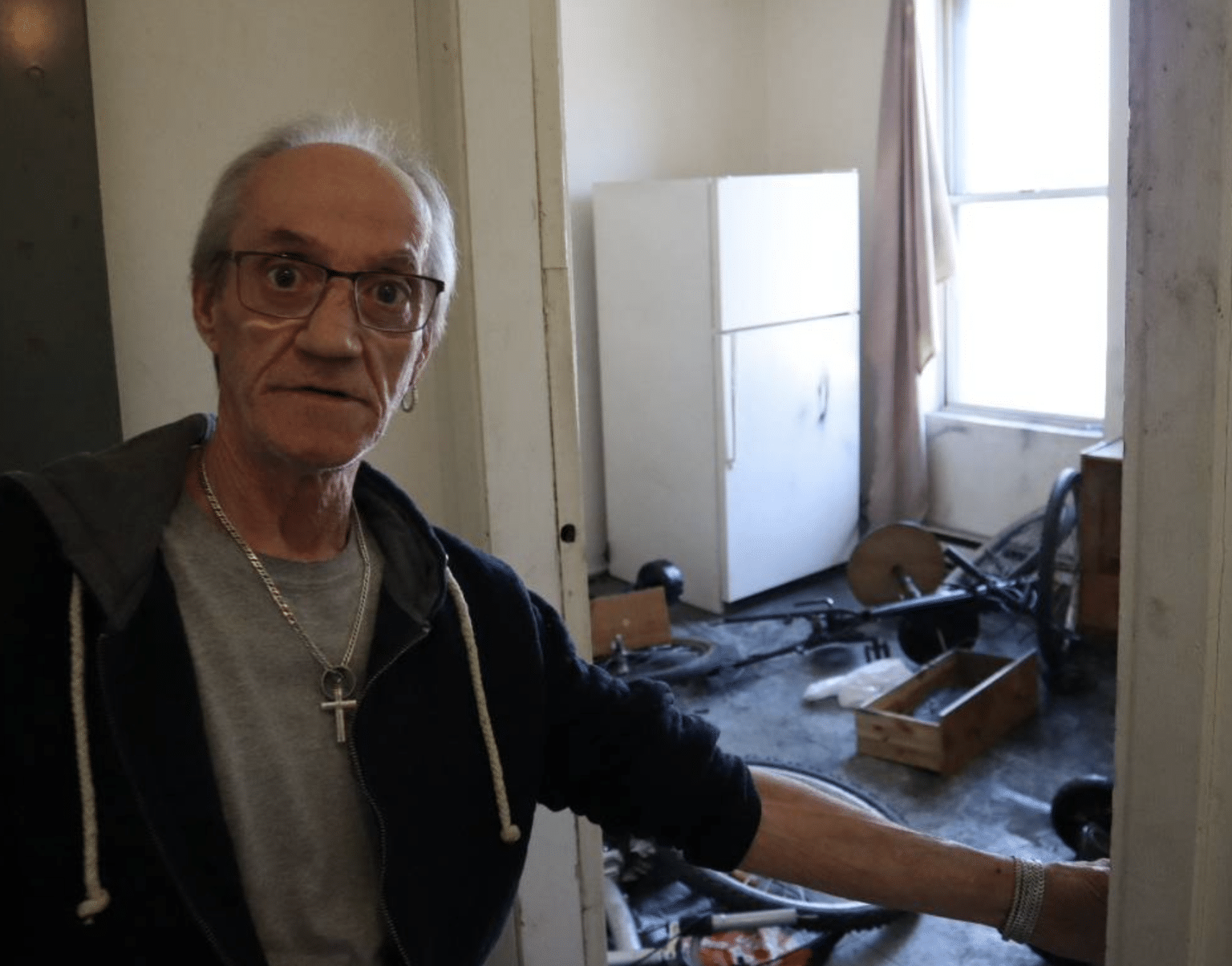From The Rover : Real Estate Boom Driving an “Unprecedented” Surge in Homelessness

As The Last Ambulance prepares to publish an article on how paramedics respond to the most vulnerable members of the communities they serve, I thought it would be important to provide background on just how much of an issue homelessness is in Montréal.
This article was written by Christopher Curtis and was published in The Rover on September 28, 2023. It is republished with permission.
As Montreal’s homeless population grew by a staggering 57 per cent since 2018, the price of a house on the island nearly doubled. Experts say those two facts are closely related.
The front door had either been kicked in or pried open.
Either way, there was nothing preventing someone from walking off the street and into any of the bedrooms inside that boarding house.When I visited the building on a cold November morning four years ago, it was clear that many already had.
The floors were littered with broken glass while the walls bore signs of violence; fist-sized holes punched into the plaster, boot imprints stamped on doors and knife scratches carved into the paint.
With winter just weeks away, the building’s heating system had failed and its third floor was gutted of any remaining insulation and drywall, letting the sub zero air seep in. There was one functional toilet left in the building.
Three tenants remained in the boarding house as it fell into an abysmal state.
The city of Montreal condemned the building days after that November visit. The St-Henri house had been purchased by a restaurateur who wanted to evict his tenants — all of whom were either coming out of homelessness or elderly single men living on a fixed income — and convert it into luxury apartments.
He’d gotten so desperate to rid the boarding house of its tenants that he forged a letter from the city of Montreal, claiming an inspection had revealed the building was unsafe and that all 14 tenants had a month to vacate the premises. When a small group refused to cede his illegal eviction notice, the owner simply stopped paying for repairs and collection rent so he could later evict them on the grounds that they hadn’t paid their rent in months.
In the end, the owner won, the building became so unlivable that tenants took a few hundred bucks from the landlord and either wound up on the street or in another flophouse. He converted the boarding house, took 14 affordable units off the market forever and put a handful of people back on the path towards homelessness.
Back then, in the midst of Montreal’s real estate boom, this sort of scene played itself out across the city. People were strong-armed into leaving their apartments because of “essential renovations” that either never came or became so invasive that people abandoned their homes to get some measure of peace from all the destruction. After they’d leave, the apartments would undergo minor renovations and almost double in price, at which point the landlord would flip the property at a massive profit.
Fuelled by greed, some entrepreneurs — like the notoriously sleazy firm LS Capital — bragged about their ability to evict tenants and flip buildings at an inflated price. Their victims included a single mother with a severely disabled child, immigrant families unfamiliar with Quebec laws and the elderly.
I’ve been thinking about that a lot lately.
Two weeks ago — thanks to the relentless journalism of Thomas Gerbet and Véronique Prince — we learned that Montreal’s homeless population jumped from 3,000 to 4,700 between 2018 and 2022. During that same period, the average price of a home in Montreal went from $350,000 to $600,000.
Surely there’s a relationship between these two data sets. The growth in Montreal’s homeless population (57 per cent) is just slightly less pronounced than the surging price of real estate (71 per cent) over that four year period.
And yet, few of the dozens of media reports on homelessness in Montreal this summer focused on housing affordability. Whether it’s the sensationalist reporting about prostitution, violence and open air drug markets east of downtown or the more personal approach used by The Rover, it may be that we’re missing the forest for the trees.
Sam Watts is the CEO of Welcome Hall Mission, one of Canada’s oldest homeless shelters and a service that’s managed to get over 1,000 community members off the streets and into apartments since the beginning of the pandemic. Watts also sits on the advisory board alongside Canada’s housing minister. He says the surge in real estate prices and the evaporation of affordable housing stock is plunging Montreal into an unprecedented crisis.
“Montreal has never needed Welcome Hall Mission more than it does now and we’ve been around for 132 years,” Watts said. “There are provincial subsidies for people to rent apartments and get out of homelessness. But there are so few affordable apartments that often, by the time you find something suitable, the subsidy is gone and you’re back to square one.”
Watts says there are three factors driving this latest crisis and Montreal checks them all off.
The first: low vacancy rates for affordable housing. Last year, the vacancy rate for apartments under $1,000 a month was 0.9 per cent. Across the island, vacancy rates dropped to 2.2 per cent in 2022. Experts say a healthy, competitive rental market should have a vacancy rate of at least 3.5 per cent.
The second: when the cost of basic housing surpasses 30 per cent of a person’s income. Early in the pandemic, annual rent increases in Montreal were double the national average and steeper than any major city in Canada.
“When someone working at an average wage has to spend much more than that 30 per cent on rent, you combine that with low vacancy rates, you’re gonna have a major increase in homelessness,” Watts said.

The third: when a city adopts a “culture of protection” for existing property owners.
“The municipal culture in North America, is one that favours the status and the rights of property owners. Either me with my home in Beaconsfield or somebody who owns a commercial property. So when you have these mounting complaints from homeowners about homelessness (east of downtown) and we see it as a neighbourhood problem, we always end up in the wrong place.
“If we start from the perspective of helping the people experiencing homelessness and we think about how to offer them solutions, then we fix the problem for the people but also for the neighbourhood. You’re seeing this in Chinatown right now, everyone’s worried about what the neighbours are saying. And I get that, a daycare shouldn’t have people peeing on the window. “But if that’s the problem you want to solve, you’re just going to trigger a great big game of whack-a-mole. Pressure mounts, the police are called in, the problem gets moved to someone else’s backyard. And then the same thing happens a few months later.”
This too has been a major problem in Montreal, where police have dismantled countless homeless encampments only to see them moved deeper into the shadows. Last winter, the Transport Ministry fought tooth and nail to evict a west-downtown encampment that housed an elderly cancer patient, a pregnant woman and someone suffering from a debilitating blood infection.
Just a short walk from the encampment, a homeless day centre called Resistance Montreal has been under pressure from citizens groups to leave west-downtown despite a surge in demand for their services. The shelter is moving 1 kilometre south from Westmount to St-Henri but there’s been resistance to the shelter from property owners in the rapidly gentrifying neighbourhood.
But it isn’t just Sam Watts ringing the alarm about the relationship between housing affordability and homelessness. In the United States, a gargantuan study on the subject found a direct link between rates of homelessness and the cost of housing in major cities.
Even in cities where poverty rates are very high — Miami, Philadelphia, Detroit — the homelessness population is still relatively low because there’s still a robust stock of affordable housing. But when you move to cities with a low poverty rate and booming economy — San Francisco, Boston, San Jose — there’s been an explosion of homelessness that mirrors the rising cost of housing.
These economies attract highly paid workers in tech, finance or other highly specialized industries and they, in turn, attract a new class of lower-paid but essential labourers like caretakers, nurses, executive assistants and other support staff. But instead of building more housing to accommodate people with a modest income, the cities allow the free market to squeeze every last dollar they can out of them.
The result? More people on the streets, more people in emergency rooms, more 911 calls for minor disturbances and more overdose deaths. So even if — as the Quebec government did last year — the authorities dramatically ramp up emergency spending on homelessness, the money is just attacking symptoms instead of the disease.
Of course, none of this negates the fact that addiction, mental illness and inter generational trauma are also significant factors in the homelessness crisis. And Watts insists that, without psychosocial support and access to community, even people in housing will have a hard time staying off the streets.
But, in the American study, there was no correlation between states with higher-than-average rates or mental illness and homeless populations.
In Canada, the problem is compounded by the fact that, to fight homelessness, it often requires all three levels of government to work together. So while it’s welcome news that the federal government recently announced $20 billion in spending for affordable housing, Quebec has abandoned the AccèsLogis social housing program after years of lobbying from private developers.
In Montreal, the Plante administration came to power on a promise to coerce developers into including social housing in their projects. The city adopted a bylaw in 2021 that would force major developers to either include social housing in their buildings or pay a fine. Of the 151 projects affected by the bylaw, none include social housing. Instead, developers merely pay a fine and move on. We know this thanks to the investigative reporting of CBC Montreal’s Erika Morris.
Faced with such a bleak set of facts, you’d think Sam Watts would be despondent. But if you know Watts, you know he’s optimistic. Almost to a fault.
“Here’s why I’m hopeful,” Watts said. “We’re at an inflection point right now in Canada. Five years ago, if I were yammering on about the need for housing, food security, the challenges with mental health, everybody would give me a polite hearing. But today, it’s become either number one, two or three on the political agenda. I’ve never seen it take up this much space in the political discourse.
“We’re in a spot where if we don’t convince the politicians to do the right thing, to do what everybody knows needs to be done — create more subsidized housing — we’re in big trouble. And the time to act is now. But I’m seeing things start to move and when that happens, there’s a reason to be hopeful.”